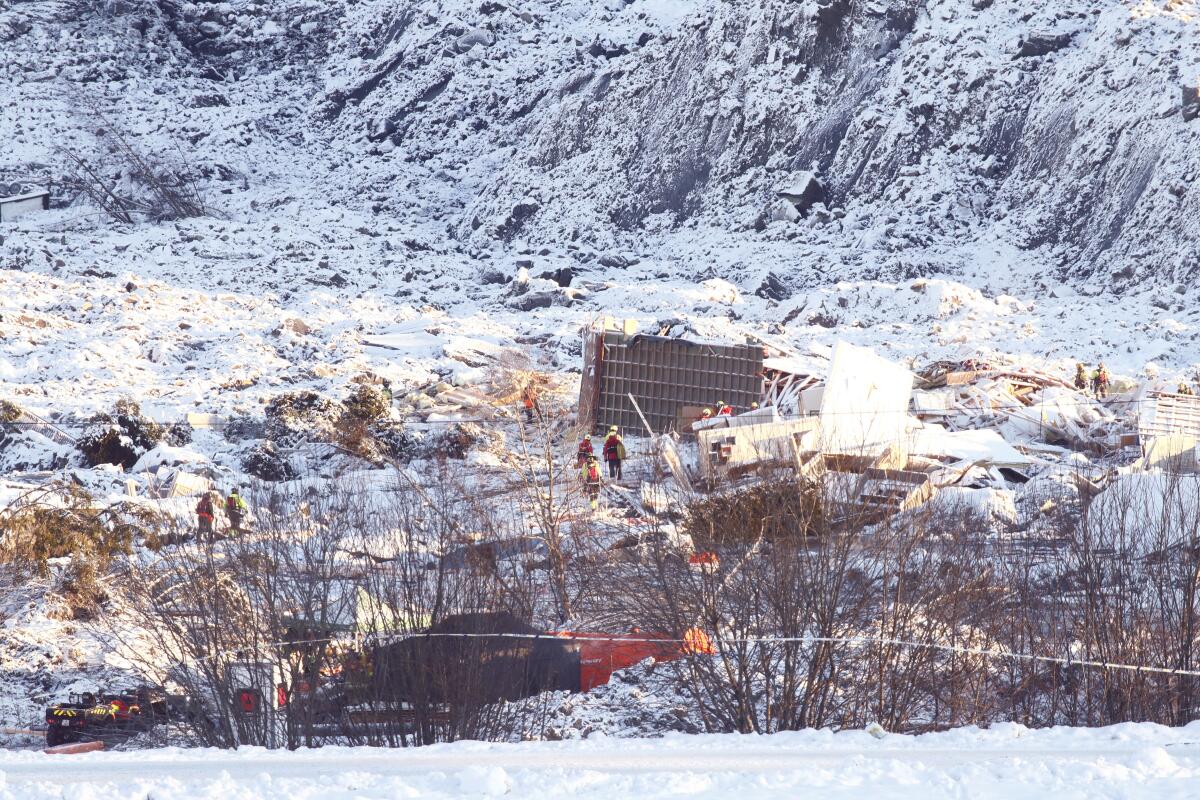Hopes fade in Norway landslide that left 7 dead and 3 still missing

- Share via
COPENHAGEN — Norwegian officials insisted Monday that there was “still hope” of finding survivors in air pockets five days after the worst landslide in the country’s modern history killed at least seven people and carried away homes in a village north of Oslo. Three people are still missing.
Police spokesman Roger Pettersen said search efforts in the village of Ask, 16 miles northeast of the Norwegian capital, are still considered “a rescue operation.” But only bodies of the dead have been found in the last few days.
The region’s subzero temperatures are “working against us, but we have been very clear in our advice to the [rescuers] that as long as there are cavities where the missing may have stayed, it is possible to survive,” said Dr. Halvard Stave, who is taking part in the operation.
Temperatures in Ask were minus-17.6 degrees Monday.
“I would still describe the situation as very unreal,” said Anders Oestensen, the mayor of Gjerdrum municipality, where Ask is located.
Search teams patrolled with dogs as helicopters and drones with heat-detecting cameras flew over the ravaged hillside. At least 1,000 of Ask’s 5,000 residents were evacuated.
Philip Manshaus killed his Chinese stepsister and opened fire on a mosque because he believed white people were ‘on the brink of extinction.’
The landslide early Wednesday cut across a road, leaving a deep, crater-like ravine. Some buildings are now dangling on the edge of the ravine, which grew to be 2,300 feet long and 1,000 feet wide. At least nine buildings with more than 30 apartments were destroyed.
“This is completely terrible,” Norwegian King Harald V said after the members of the royal family visited the landslide site Sunday.
The few daylight hours in Norway at this time of year and fears of further erosion have hampered rescue operations. The ground is fragile at the site and unable to hold the weight of heavy rescue equipment.
The exact cause of the accident has not been determined, but the area is known for having a lot of quick clay, a material that can change from solid to liquid form. Experts said the quick clay, combined with excessive precipitation and damp winter weather, may have contributed to the landslide.
In 2005, Norwegian authorities warned people not to construct residential buildings in the area, saying it was “a high-risk zone” for landslides, but houses were eventually built there later in the decade.
More to Read
Sign up for Essential California
The most important California stories and recommendations in your inbox every morning.
You may occasionally receive promotional content from the Los Angeles Times.














